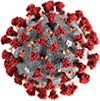The Magic of Water: Just Turn the Spigot, and Poof
 By Bill Primavera
By Bill Primavera
Don’t think that I’m weird, but one of my favorite movies is Disney’s “Enchanted.” The animated fairytale princess finds herself banished to real-life Manhattan, and one of her first discoveries of modern life is the magical waterfall when she turns on a spigot in the shower. Where does the water come from, she asks her host?
From the pipes, she is told.
But where do the pipes get it, she then asks?
When you turn on that faucet in your kitchen or bathroom without a thought as to where the pipes get it, you can know that the water you enjoy represents centuries of sophisticated engineering from the time of the Egyptians and Romans. The latter civilization developed the first underground aqueduct in 312 BC, which created the fundamental design for the construction of our own Croton Aqueduct, completed in 1842 and stretching 40 miles from the Croton River Dam to New York City. The enormity of the project made it the greatest engineering feat in the United States at the time.
Since then, our municipal water system has expanded with a New Croton Aqueduct, built in 1890, the Catskills Aqueduct in 1910, from which most of Westchester gets its supply now, and the Delaware Aqueduct in 1928, which is constructed on the other side of the Hudson River.
Thanks to well-protected wilderness watersheds, New York’s water treatment process is simpler than in other American cities. One advantage of our system is that 95 percent of the water is delivered by gravity; the other 5 percent needs to be pumped to maintain pressure. More than 90 percent of homes in Westchester enjoy municipal water, while Putnam still depends mostly on well water due in part to its topography and more rural nature.
Along with some house hunters’ demands for sewer, many demand municipal water as well.
The odyssey of our water supply originates with the streams and lakes in the Croton watershed, the Catskills or in the Delaware system, where water collects into the 19 reservoirs in the New York City system. From the reservoirs, water travels via the aqueducts and through our communities in mains that are as large as 17 feet in diameter.
From the main, water is siphoned off by our local water departments and delivered to a local treatment plant in pipes that are 24 inches in diameter. Some treatment plants are shared by several towns.
At the plant, the water is filtered through a two-part process, which includes a 24-inch sand filter, and certain protective elements are added to it. These include chlorine to kill organisms; fluoride to prevent tooth decay; sodium hydroxide to raise the pH level; and orthophosphate, a substance that coats pipes and keeps them from leaching lead into the drinking water.
Once treated, the water is sent on its way via pumps through pipes 12 to 16 inches in diameter to a water tower, usually 40 to 50 feet high and placed on a higher elevation. It is the release of water from these towers in pipes of similar diameter, and then in progressively smaller pipes, which builds the pressure, until it arrives from the street into our homes in a three-quarter-inch pipe.
There, it passes a meter that registers the home’s consumption. Currently most meters are read individually but such old meters will eventually be replaced with automatic reading technology. In my last single-family home (I live in a condo now where I don’t have to worry about my water source), I know my meter was checked regularly because I received a call from the town Water Department soon after I filled my pool and was asked if my system should be checked for a leak.
From the meter, the water travels to our bathrooms and kitchens for our toilets, shower and tubs.
Putnam County operates somewhat differently for its lesser requirements for municipal water, with its own series of reservoirs that comprise the Croton watershed. Towns like Brewster and Southeast, for instance, take their water from their own reservoirs.
Today, only Ossining gets its water from the Old and New Croton Aqueducts, which supply only 10 percent of New York City’s water today.
According to my research, our municipal water has a strict daily testing schedule, which obviously bottled water does not, and it enjoys a great reputation for taste. In my past professional pursuits, I would sometimes dine or host tastings with food and restaurant critics. While hosting a tasting some years ago for the inimitable food and restaurant critic Gael Greene, I was delighted when she declined bottled water in favor of “plain old New York City water. It’s the best!”
Fearing more water for our community than we may want from the remnants of Hurricane Ida this week, I’ll enjoy a great tasting glass of water directly from the tap, followed by a nice hot shower in soft water with great pressure, not even thinking twice about where the pipes get it.
Bill Primavera, while a writer and public relations practitioner, is also a realtor associated with William Raveis Real Estate. To engage the talents and services of The Home Guru to market your home for sale, call 914-522-2076.

Examiner Media – Keeping you informed with professionally-reported local news, features, and sports coverage.

 By Bill Primavera
By Bill Primavera
